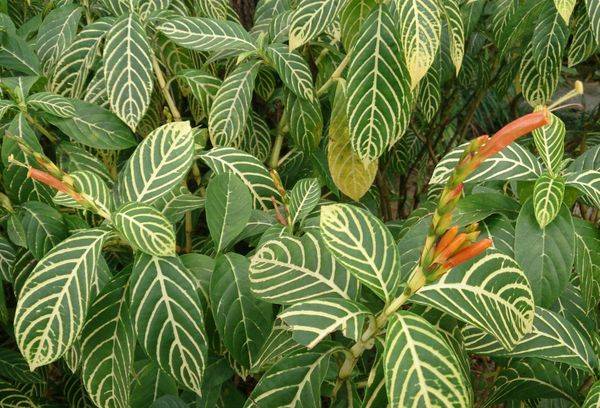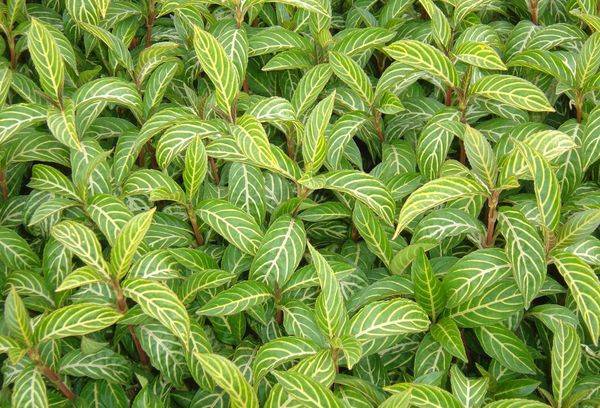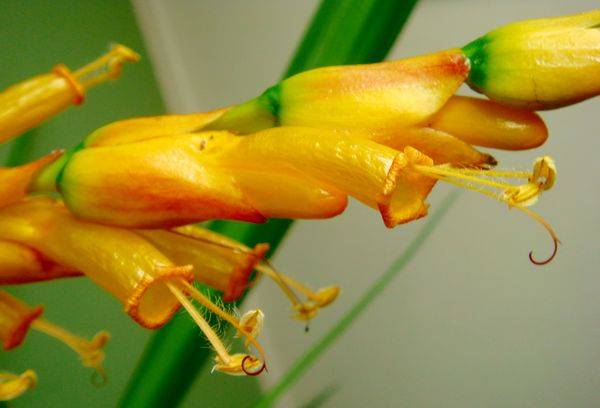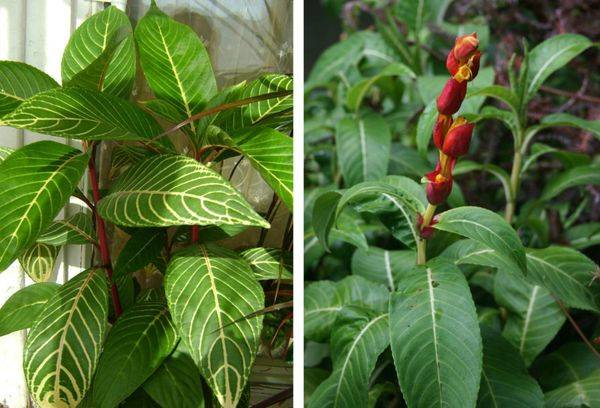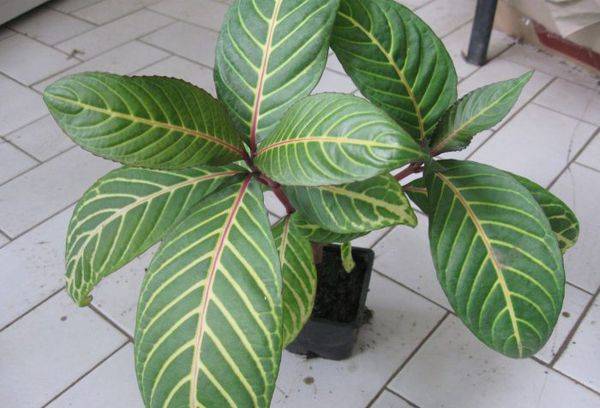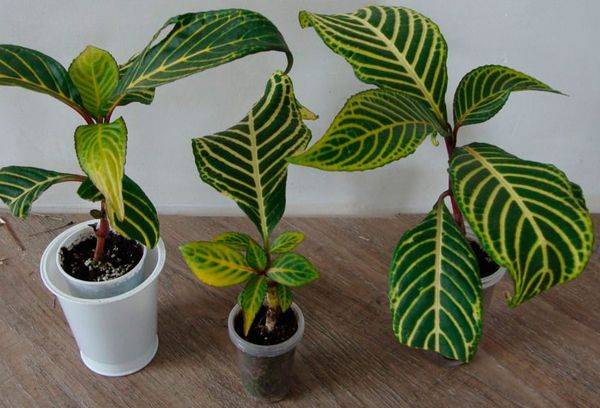How to properly care for sanchetia for interior landscaping
To create a beautiful interior, you must take care of suitable plants. Sanhetia, a variegated shrub with a noble appearance, is one of the best solutions. Its large leaves are incredibly beautiful, and its flowers are elegant and sophisticated. Therefore, shrubs are often used in interior design. Sanchetia is not too capricious in care, but is sensitive to mistakes. There are several mandatory rules that must be followed.
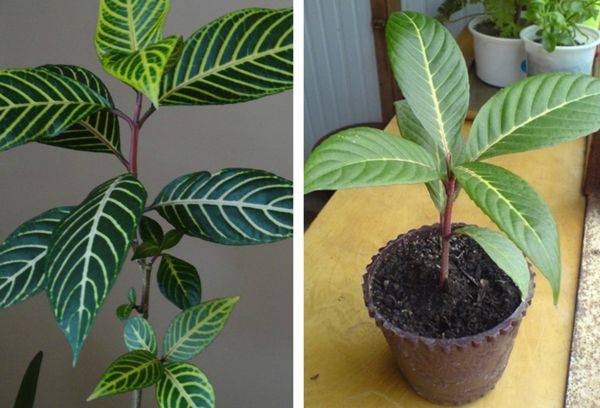
Description
Sanchezia (lat. Sanchezia, Russian also sanchezia, sankhesia, senecia, sanshetia) belongs to the acanthus family and naturally lives in the equatorial climate, which determines its preferences. In winter, the leaves of the bush often change color and even fall off, so that all the charm is lost. In addition, pests appear on the plant quite easily. However, in general, this flower is not capricious and is suitable for beginners.
There are more than 30 species of Sanchezia in natural conditions; two of them have taken root in indoor floriculture:
- Noble (also beautiful, less often - decent or generous, lat. Nobilis) is a rather large herbaceous plant that in nature forms a subshrub up to 2 m in height. Luxurious, brightly colored leaves in their natural environment grow up to 30 cm wide and 10 cm long, decorated with golden veins and edging.In indoor conditions, the flower is formed by pruning, not allowing it to stretch to the ceiling; because of this, the leaves become smaller to the size of a human palm, but do not lose their decorative effect.
- Small-leaved sanchetia is less popular. Forms a relatively low, well-branched clump. This species is distinguished by darker, chestnut stems, elliptical leaves and a reddish midrib below.
Senecia grows really very quickly, especially with proper and regular pruning. A small seedling soon develops into a beautiful bush, which looks equally excellent in the interior, winter garden, greenhouse or home greenhouse.
Bloom. The flowers are tubular in shape and bloom at the top of the shoot, on a loose inflorescence resembling a spike. Petals range from orange to bright pink. Their rounded upper edges, slightly bent back, and flexible stamens protruding beyond the petals look very elegant.
Interesting fact
Sanchetia flowers are one of the hummingbirds' treats. These fast-winged birds feast on the nectar of the bush and in return pollinate it. The fruits of Sanchezia are dioecious capsules; when ripe, they burst and scatter small seeds in the wind.
Unfortunately, the formation of a spikelet and flowering negatively affect the shoot: almost all of the leaves on it fall off. In addition, for the spikelet you need to leave last year's branch, which will look rather pathetic against the background of the young shoots. As a result, the gardener has to choose: admire the flowers or the luxurious crown. The optimal solution is partial pruning. One or two old shoots are preserved in the middle of the bush, which give graceful flowers, and the main crown is left to young, bright-leaved branches to form.
Care
Lighting. This is one of the factors to which Sanchezia is sensitive. Since in its homeland it forms the equatorial undergrowth, it needs bright but diffused light. It is best to place the pot on the floor near a window so that the sun's rays are refracted - this will be enough and burns will not appear on the leaves.
The other extreme, excessive shading, is also harmful to Sanchetia. The first sign is lengthening of the shoots and shrinking of the leaves. You need to bring the flower closer to the light or turn on the phytolamp.
Trimming. This is the second important factor (there are three in total). The procedure maintains the neat appearance of the shrub and its health. Young shoots are pinched, forming a crown to your liking: in the form of a bush, clump or tree. Old leaves and shoots are removed, preserving the freshness of the plant and, importantly, rejuvenating it.
Watering and humidity. The last of the key points in care. Sanchezia is not suitable for those who are away from home for a long time: the flower needs to be watered little by little, but every day. As soon as the surface of the soil dries out at least once, the senecia sheds its leaves. Water for irrigation is used that has settled and is at room temperature.
Advice
Fluid stagnation is no less harmful. This will lead to rot. Therefore, an hour after watering, all the water that has flowed into the pan is poured out.
In addition to the soil, the air must also be humid: at least 60%. In winter, when radiators and heaters are running, the problem of leaves drying out arises. They need to be sprayed regularly. To prevent unsightly stains from remaining on the patterned leaves, only boiled cool water should be poured into the spray bottle.
Temperature and feeding
The Ecuadorian beauty feels most comfortable at +18-25˚ C; in winter she does not mind cold temperatures down to +12 degrees.Direct air flows (drafts) and sudden temperature changes are extremely undesirable.
Fertilizers are applied in spring and summer. You need to repeat the procedure once a week, alternating combined mineral fertilizer with organic fertilizer. Before fertilizing, it is better to water the plant well.
Advice
Resource purity-en.htgetrid.com Recommends that in the summer you take the senescence out into the open air, for example, onto a balcony or veranda.
Planting, relocation and propagation
Sanhetia needs a really large pot. A large drainage hole facilitates excellent fluid removal while maintaining moisture and root respiration. Regarding the contents of the container, it must be large drainage, as well as a loose nutrient substrate.
Sanchetia regularly needs replanting; an adult plant is transplanted every 1-2 years, that is, quite often. This is due to the fact that the shrub develops very quickly. There are no special subtleties in the procedure, but everything needs to be done carefully, without damaging the thin shoots and roots.
The best time for transplantation and resettlement is spring. Sanchetia is propagated by cuttings, often using shoots cut during crown formation and rejuvenation. The cuttings are rooted in small containers and transplanted into pots no earlier than 1-2 leaves appear. To form a bush, it is better to pinch the top a couple of times.
Advice
Winter is a period of stagnation. This means that the plant does not need to be touched, even watering is reduced.
In the interior
Sanchezia is best placed below: on the floor or a small coffee table. Sometimes several such shrubs are placed along walls or in corners. They help make the room visually softer and more pleasing to the eye.This flower can change the atmosphere of the house for the better: thanks to its large leaves, it gives a lot of air.
Sanchetia is not suitable for small rooms. It will look harmonious in the hall, study, living room or office. Verandas, greenhouses, and heated balconies will also benefit from the presence of variegated shrubs.
To highlight the smooth lines of Sanchezia and soften the transition from pot to floor, use floor accessories or place the pot near a corner or furniture.
In general, Sanchetia is an original, attractive plant. The shrub is perfect for any interior, and even a beginner can handle caring for it.
